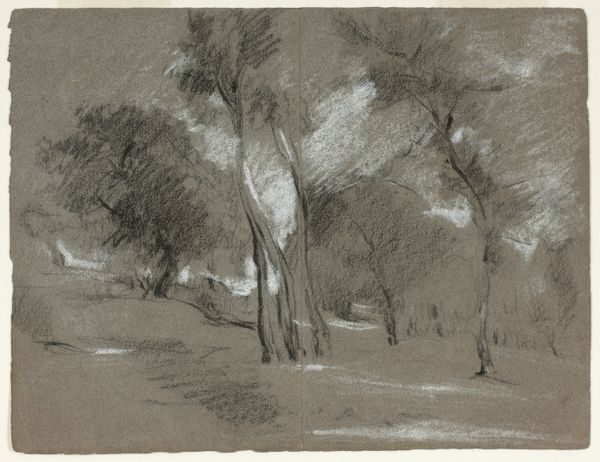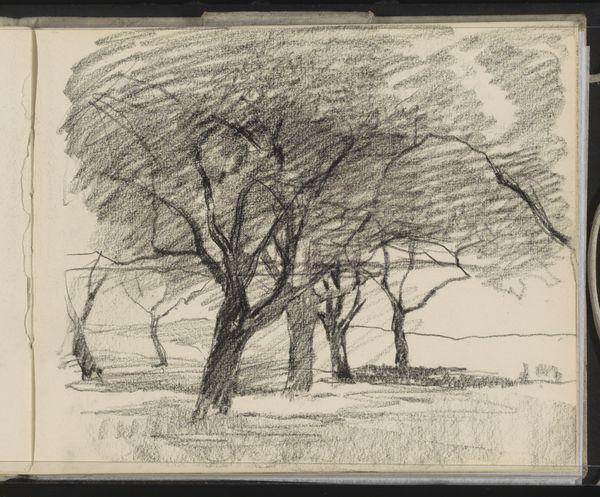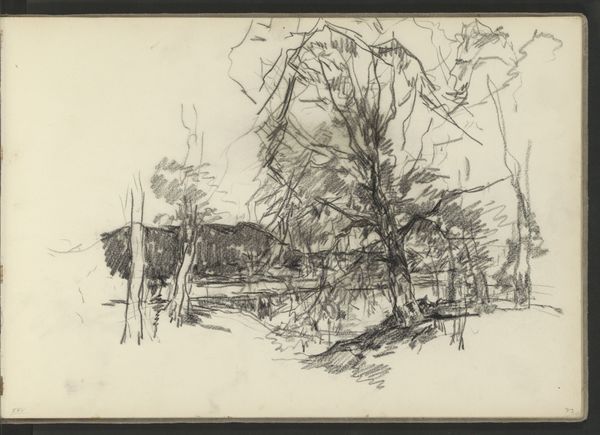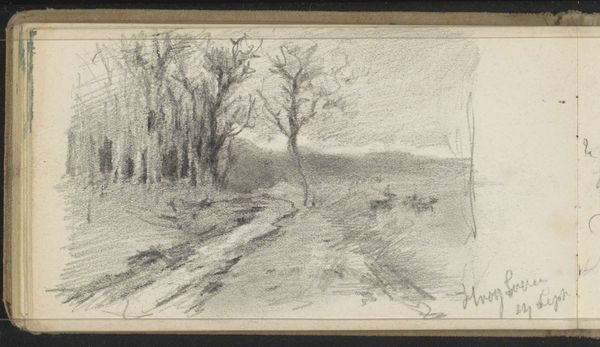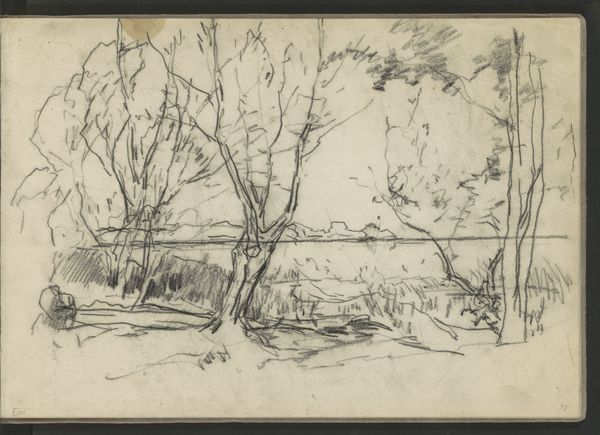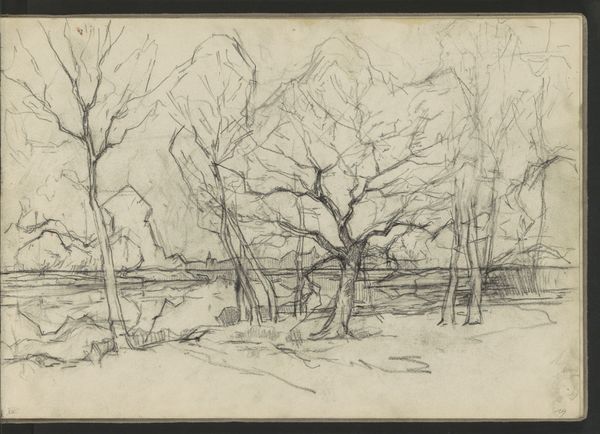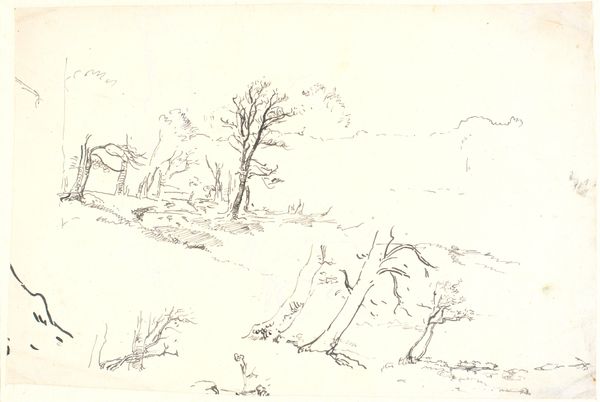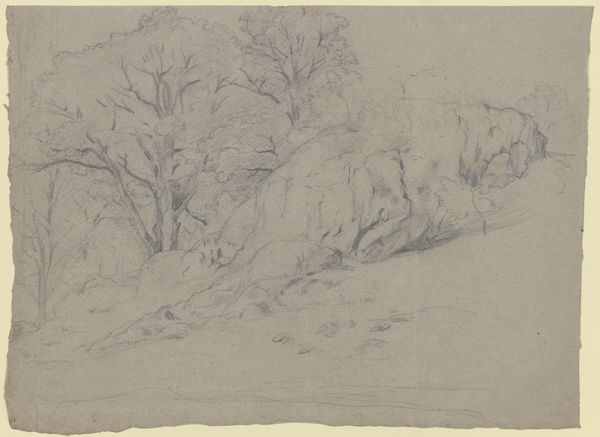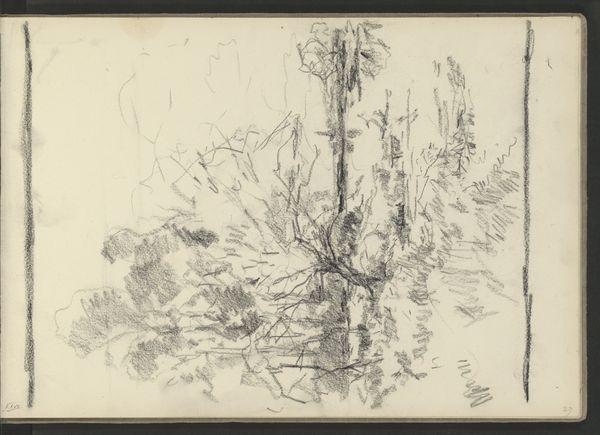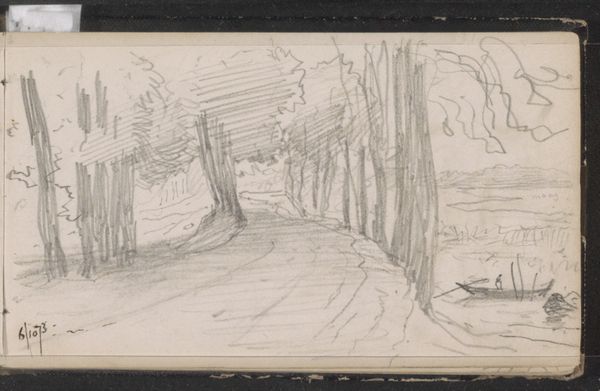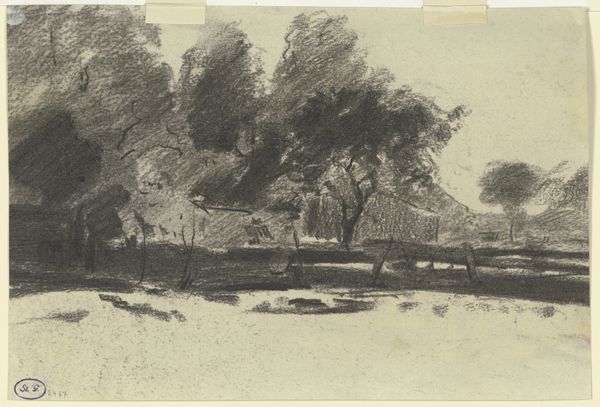
drawing, pencil, graphite, charcoal
#
drawing
#
pencil sketch
#
landscape
#
pencil
#
graphite
#
charcoal
Copyright: Rijks Museum: Open Domain
Curator: Looking at "Bomen," dating back to around 1891 by Egbert Rubertus Derk Schaap, one can appreciate the artist’s use of graphite, charcoal and pencil in this landscape. It's a deceptively simple work. What strikes you about it initially? Editor: The texture! It’s rough, unfinished almost. I'm immediately drawn to the dense charcoal, the clear evidence of process, like the artist rapidly capturing the essence of the trees' materiality. Curator: It's a striking contrast between that dense charcoal and the bare, skeletal branches of the tree on the left. Consider the societal fascination with nature during that time, and how anxieties surrounding industrialization influenced artistic expression. Do you think this reflects a romanticized, perhaps even melancholic, view? Editor: Melancholy perhaps, but I see it more as a focus on the physicality of the natural world. How the charcoal clings to the paper, mimicking the rough bark. I’m curious about where Schaap sourced his materials; was it local, indicative of specific ecological concerns of that moment? Curator: The materials, combined with his approach, are indicative of the socio-political views of the time. The way he renders the trees seems to invoke feelings of both strength and fragility. Given the societal changes and intellectual movements circulating, do you see any resonances of emerging eco-consciousness here? Editor: Possibly. I see labor here: both Schaap's and nature’s own. Look how the density of marks mimics growth. The build-up of organic matter in a forest floor, and the artist building up material to suggest form. Curator: So, considering that, we could argue that the artist is using the drawing to suggest themes about the environment through his material engagement. Editor: Precisely! He wasn't simply representing the scene; he was embodying its making, it’s inherent material. Curator: A vital detail for us to consider. It really invites the audience to consider a multitude of interwoven perspectives of self and landscape. Editor: I completely agree. It prompts us to rethink art history through production and its relationship to natural, cultural, and historical contexts.
Comments
No comments
Be the first to comment and join the conversation on the ultimate creative platform.
